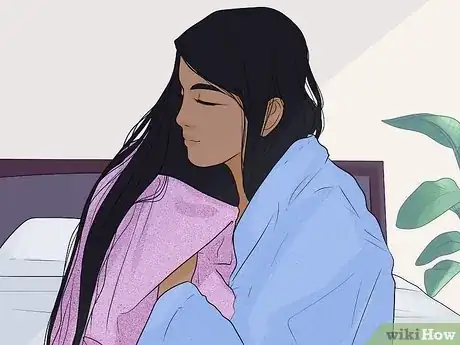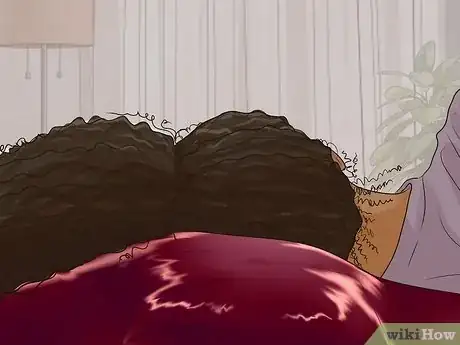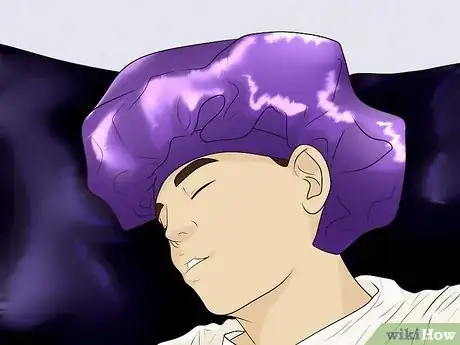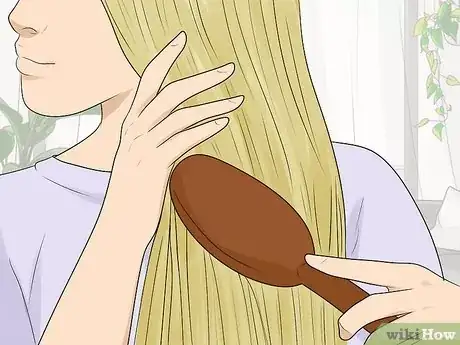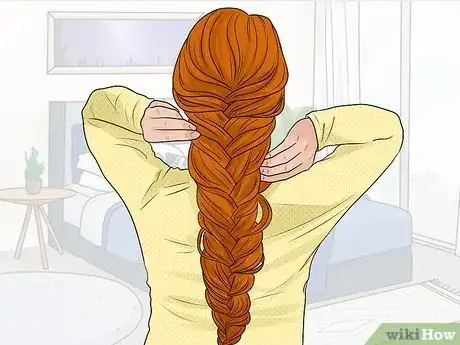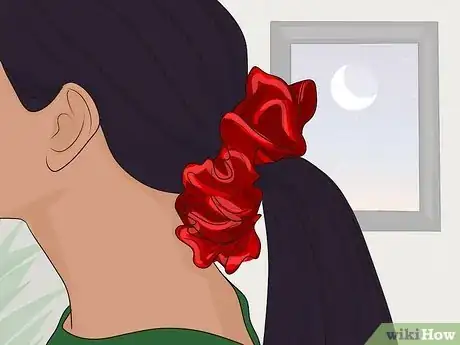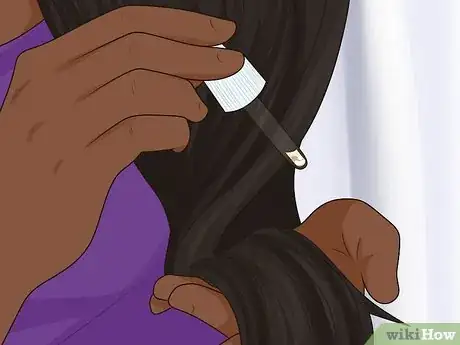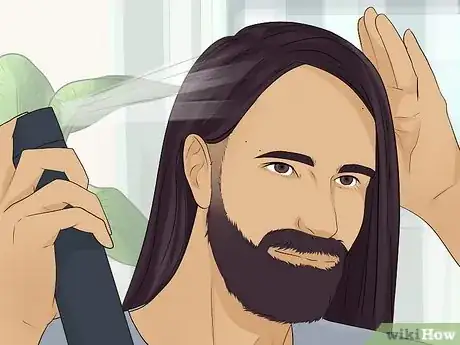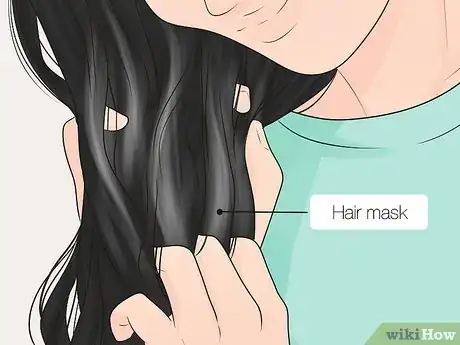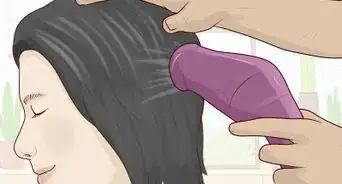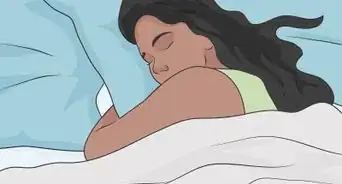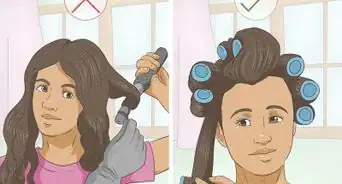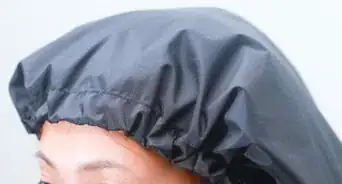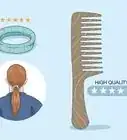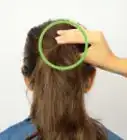This article was co-authored by Jenny Tran and by wikiHow staff writer, Glenn Carreau. Jenny Tran is a Hair Stylist and the Founder of JT Hair Lab by Jenny Tran based in the Dallas, Texas metro area. With over seven years of professional hair styling experience, Jenny specializes in hair coloring, haircutting, and hair extensions. JT Hair Lab is an authorized carrier of R+Co and of Milbon and is committed to using products with quality ingredients.
There are 7 references cited in this article, which can be found at the bottom of the page.
This article has been viewed 4,860 times.
Long, flowy locks? Check. Sassy hairstyles, accessories, and well-played layers? Check, check, and check. Breakage, frizz, and unruly knots? Uh oh. You’re loving your long hair, but you’re not loving how the two of you start each day. If your morning mirror routine involves assessing the size of the tumbleweed that took over your head during sleep, you may need to learn how to sleep with long hair. Look no further! We’ve compiled the best tips, tricks, and advice to keep your long hair healthy throughout the night.
Things You Should Know
- Dry your hair completely before going to sleep, as water makes your hair vulnerable to damage. Wash your hair in the morning if possible, not at night.
- Use silk or satin pillowcases to protect your hair from damage and knotting. Alternatively, wrap your hair in a silk or satin hair wrap for overnight protection.
- Braid your hair loosely before bed to keep it contained and tangle-free.
- Use hair treatments like a leave-in conditioner or an overnight hair mask to strengthen and protect your hair while you sleep.
Steps
Expert Q&A
-
QuestionWhat if you don't have time to dry your hair before bed?
 Jenny TranJenny Tran is a Hair Stylist and the Founder of JT Hair Lab by Jenny Tran based in the Dallas, Texas metro area. With over seven years of professional hair styling experience, Jenny specializes in hair coloring, haircutting, and hair extensions. JT Hair Lab is an authorized carrier of R+Co and of Milbon and is committed to using products with quality ingredients.
Jenny TranJenny Tran is a Hair Stylist and the Founder of JT Hair Lab by Jenny Tran based in the Dallas, Texas metro area. With over seven years of professional hair styling experience, Jenny specializes in hair coloring, haircutting, and hair extensions. JT Hair Lab is an authorized carrier of R+Co and of Milbon and is committed to using products with quality ingredients.
Professional Hair Stylist Sleep on a satin or silk pillowcase to protect your hair. Your hair is most fragile when it's wet, and you want to create the least amount of friction and rubbing while you’re sleeping. Don't tie up your hair because that will only create more tension on your hair and your hair won't dry completely. Finally, make sure you're not laying on your hair. Instead, fan it out on top of your head.
Sleep on a satin or silk pillowcase to protect your hair. Your hair is most fragile when it's wet, and you want to create the least amount of friction and rubbing while you’re sleeping. Don't tie up your hair because that will only create more tension on your hair and your hair won't dry completely. Finally, make sure you're not laying on your hair. Instead, fan it out on top of your head.
References
- ↑ https://www.realsimple.com/beauty-fashion/hair/hair-care/wet-hair-mistakes
- ↑ https://www.blissmark.com/beauty/how-to-sleep-to-protect-long-hair/
- ↑ https://www.instyle.com/hair/hair-products-tools/is-air-drying-hair-bad
- ↑ https://lovehairstyles.com/how-to-sleep-with-long-hair/
- ↑ https://coveteur.com/2020/01/09/protect-hair-damage-while-sleeping/
- ↑ https://coveteur.com/2020/01/09/protect-hair-damage-while-sleeping/
- ↑ https://lovehairstyles.com/how-to-sleep-with-long-hair/
- ↑ https://www.aad.org/public/diseases/hair-loss/insider/stop-damage
- ↑ https://uihc.org/health-topics/traction-alopecia-type-hair-loss#:~:text=What%20is%20traction%20alopecia%3F,Weaves
- ↑ https://lovehairstyles.com/how-to-sleep-with-long-hair/
- ↑ https://www.blissmark.com/beauty/how-to-sleep-to-protect-long-hair/
- ↑ https://www.blissmark.com/beauty/how-to-sleep-to-protect-long-hair/
- ↑ https://coveteur.com/2020/01/09/protect-hair-damage-while-sleeping/
- ↑ https://coveteur.com/2020/01/09/protect-hair-damage-while-sleeping/
- ↑ https://coveteur.com/2020/01/09/protect-hair-damage-while-sleeping/
